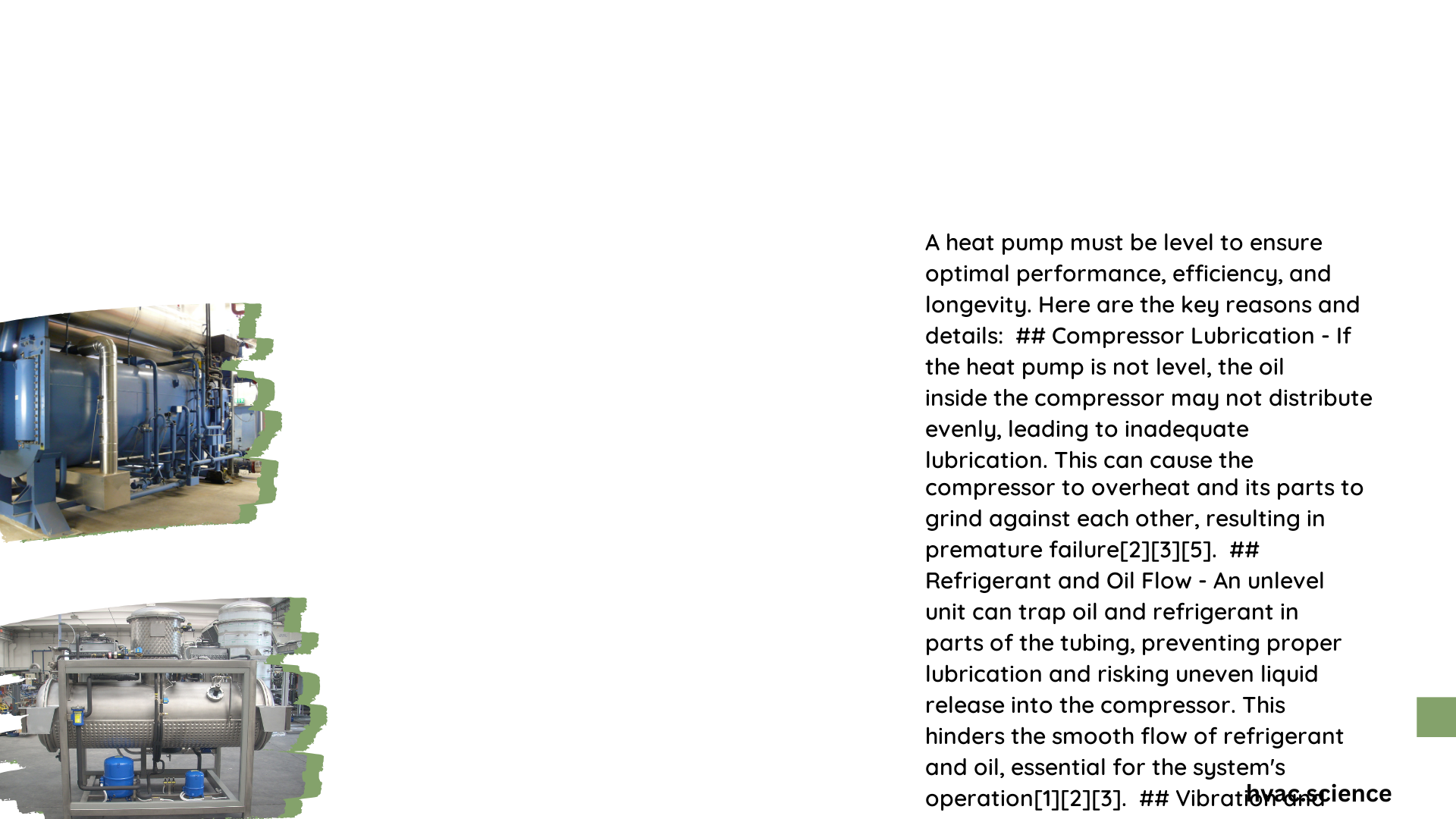Heat pumps require precise leveling to function efficiently and prevent potential mechanical complications. An improperly installed heat pump can experience reduced performance, increased energy consumption, and potential system failures. Proper elevation and horizontal alignment are essential for maintaining refrigerant flow, ensuring optimal heat transfer, and protecting the unit from environmental challenges like snow and water accumulation.
Why Does Level Installation Matter for Heat Pumps?
What Happens When a Heat Pump Is Not Level?
When a heat pump is not perfectly level, several critical issues can emerge:
- Refrigerant Flow Disruption
- Uneven surfaces can cause refrigerant circulation problems
- Reduces heat transfer efficiency
-
Increases mechanical stress on system components
-
Drainage Complications
- Improper drainage leads to water pooling
- Potential corrosion and electrical component damage
- Increased risk of system freezing in cold environments
How Much Tolerance Exists for Heat Pump Leveling?
| Leveling Tolerance | Potential Impact |
|---|---|
| Within 1/4 inch | Minimal system stress |
| 1/2 to 1 inch | Moderate performance reduction |
| Over 1 inch | Significant efficiency loss |
Critical Steps for Proper Heat Pump Leveling

What Tools Are Needed for Leveling?
Essential tools for heat pump installation include:
– Professional carpenter’s level
– Adjustable shims
– Concrete or composite mounting pad
– Gravel base (optional)
– Measuring tape
Where Should a Heat Pump Be Installed?
Recommended installation locations:
– Elevated ground surface
– Away from direct wind exposure
– Minimum 12-18 inches above ground level
– Clear of vegetation and debris
– Stable, flat foundation
Performance Implications of Improper Leveling
Uneven heat pump installation can lead to:
– 10-25% increased energy consumption
– Reduced heating and cooling efficiency
– Potential premature system failure
– Higher maintenance costs
– Inconsistent indoor temperature regulation
How Often Should Leveling Be Checked?
Recommended inspection frequencies:
– Initial installation: Precise leveling
– Annual professional maintenance
– After significant ground movement
– Following extreme weather events
Professional Installation Recommendations
What Do HVAC Experts Suggest?
Professional HVAC technicians recommend:
– Use professional installation services
– Verify level with multiple measurements
– Ensure proper drainage around unit
– Use manufacturer-recommended mounting techniques
– Consider local climate conditions
Cost Considerations
Average additional costs for proper heat pump leveling:
– DIY leveling: $50-$150
– Professional installation adjustment: $200-$500
– Long-term energy savings: $100-$300 annually
Maintenance Tips
- Regularly inspect mounting surface
- Check for ground settlement
- Remove debris around unit
- Maintain consistent elevation
- Use weatherproof mounting materials
Potential Risks of Neglecting Proper Leveling
Consequences of improper heat pump installation:
– Reduced system lifespan
– Increased repair costs
– Energy inefficiency
– Potential warranty voiding
– Compromised home comfort
Final Recommendations
Ensure your heat pump remains level by:
1. Professional initial installation
2. Annual professional inspections
3. Monitoring ground conditions
4. Using high-quality mounting materials
5. Addressing any detected irregularities immediately
Pro Tip: Always consult manufacturer guidelines and local HVAC professionals for specific recommendations tailored to your environment and heat pump model.
